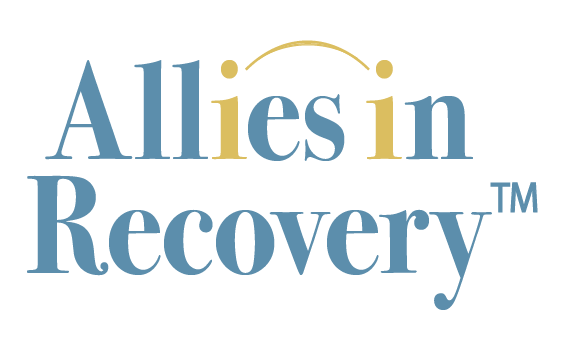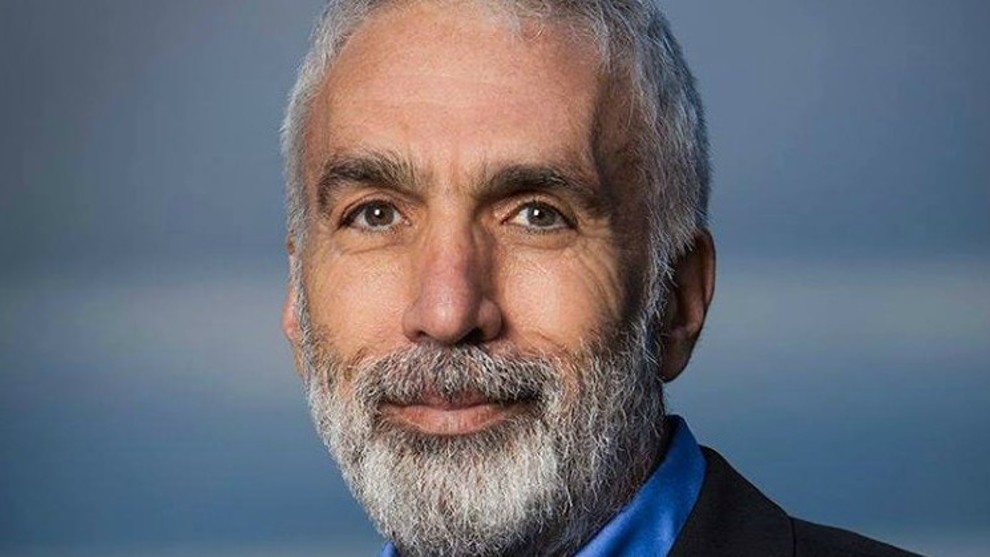[et_pb_section fb_built=”1″ _builder_version=”4.16″ global_colors_info=”{}”][et_pb_row _builder_version=”4.16″ background_size=”initial” background_position=”top_left” background_repeat=”repeat” global_colors_info=”{}”][et_pb_column type=”4_4″ _builder_version=”4.16″ custom_padding=”|||” global_colors_info=”{}” custom_padding__hover=”|||”][et_pb_text _builder_version=”4.18.0″ background_size=”initial” background_position=”top_left” background_repeat=”repeat” hover_enabled=”0″ global_colors_info=”{}” sticky_enabled=”0″]
The following is an extract taken from the Epilogue of David Sheff’s best-selling book about his son’s addiction and his own recovery as a family member: Beautiful Boy.
Beautiful Boy has been out for a while now, but as you will see, this Epilogue stands the test of time. We’d like to express a big Thank You to David Sheff for giving us permission to reprint these words.
“Oh what’ll you do now, my blue-eyed son?
Oh what’ll you do now, my darling one?”
– Bob Dylan, “A Hard Rain’s A-gonna Fall”
[Epilogue, from Beautiful Boy, by David Sheff]
HA JIN WRITES: “some great men and women are fortified and redeemed through their suffering, and they even seek sadness instead of happiness, just as van Gogh asserted, ‘Sorrow is better than joy,’ and Balzac declared, ‘Suffering is one’s teacher.’ But these dicta are suitable only for extraordinary souls, for the select few. For ordinary people like us, too much suffering can only make us meaner, crazier, pettier and more wretched.”
I am no great man, but I do not feel meaner, crazier, pettier or more wretched. There were periods when I did, but now I feel fine, at least much of the time.
Nic completed 3 months at Santa Fe, and his counselors recommended that he next go to a program in Northern Arizona where he would continue his work in recovery, plus get a job and volunteer. He said no. He told me, “I know this will worry you, but I have to get on with my life.” He tried to reassure me. “It will be all right.”
At first I said, “No, you can’t.” But then I remembered: It’s your life.
Nic caught a bus east. He went to see a friend he met at the program. We didn’t speak for a while, but then we began talking again. Now we check in with each other fairly regularly. He met someone new. She’s an art student. They got a place together. Nic is working at a café, serving decaf (he says) when a customer asks for it. And he’s writing again. He’s back writing his book. Now he has more to say about how hard it is to say sober.
We talk about our writing. We talk about our lives and news and the books we read, music and movies (Little Miss Sunshine!).
I calculate that it has been — what, a year since he left L.A. As far as I know, he’s a year sober again. After everything, do I trust that he has remained sober? Do I deny what we have been through? Do I ignore how difficult it is and will continue to be? Never. But I hope. I continue to believe in him.
≈ ≈ ≈
In the immediate aftermath of my brain hemorrhage, I complained that I had missed out on what I imagined might be a benefit of surviving a near-death experience—that is, beyond the ultimate perk: still being alive. As I said, I have often heard survivors describe the epiphanies that come from tragedy. Their lives transformed, became simpler, with clearer priorities. They had a new appreciation for life. But as I also said, I always appreciated life. Instead, for me, the brain hemorrhage made life seem scarier. I learned that tragedy could hit any of us—or our children—at any moment and without warning.
I was judging too early. Things have shifted since then. Just as there are stages of grieving or dying, there must be stages after a trauma, because the lessons of the neuro-ICU sank in after time.
I turned 50 in December. At the time, I was speaking to a therapist about the past few years. When I told him that the neurologists had all dismissed the idea that my brain hemorrhage was related to the stress in my life, he looked at me indulgently and said, “Well, it sure didn’t help.” He pointed out that before my head literally exploded, it often felt as if it could explode. For years, I had lived with intense and relentless worry about Nic. I had rationalized it: no conscientious parent of a drug addict could expect to be happy for long. I was grateful for the moments of relief—when Nic seemed better, at least when he was OK. In the meantime, I did my best to enjoy my life—Karen, Jasper, Daisy, and the rest of my family and friends, the respite, however exiguous and short-lived.
The doctor pointed out that I could make a different choice. Without invoking AA or Al-Anon, he basically restated the serenity prayer. I could decide once and for all to accept the things I cannot change, have the courage to change the things I can, and the wisdom to know the difference. The key was the second of those. Did I have the courage to change the things I could?
“I’ve tried,” I said. “I have tried for years.”
“Apparently you haven’t tried hard enough.”
The doctor asked why I was in therapy only once a week. I said that I didn’t have the time or money for more.
Of the financial excuse, he responded, “If, during these past few years, someone told you that Nic needed more therapy in order to get well, would you have found a way to pay for it?”
I answered honestly: “Yes.”
“Is his mental health more important than yours?”
I got the point.
As to the question of time for therapy, he asked, “How much time is it worth to end a person’s suffering? How much time do you waste suffering now?” Then: “You almost died. You are 50 years old. How do you want to spend the rest of your life? It’s up to you.”
My brain hemorrhage ultimately has made me appreciate, rather than fear, the profound truth of this cliché: our time here is finite. This realization impelled me to listen to the doctor and do whatever I could to get past my obsessive worry about Nic. I could not change Nic, only me. And so instead of focusing on Nic’s recovery, since then I have focused on mine.
I attended Al-Anon meetings. I also had twice-weekly therapy sessions and, for the first time ever, I lay down on the doctor’s couch. The difference has been profound — like disassembling a multi-level lego building with hidden rooms and attics, dismantling it brick by brick, examining each one — a meticulous, often frightening process. I learned that at some point, focusing on Nic’s perpetual crises became safer territory than focusing on myself. It was even safer to have a near-fatal brain hemorrhage.
As anyone in intensive therapy knows, though it’s not easy, there can be a deep transformative benefit to the work. I have been uncovering layers of guilt and shame that help explain why I was so willing to take on the responsibility for Nic’s addiction—for his life, in fact. As a result, those other clichés of Al-Anon and recovery no longer feel like clichés. I still don’t fully accept the C. Instead, I recognize that I will never know how much I caused or contributed to it. Recently in the New York Times Magazine, William C Moyers, the son of the journalist Bill Moyers and a recovering addict, said “recovery is … about dealing with that hole in the soul.” What made that hole? No one knows. How innocent we are of our mistakes, but how responsible we are for them. I accept that I made terrible mistakes raising Nic. I don’t absolve myself—even now. As you know, Nic, I am so sorry.
I have accepted the other C’s. I cannot control it, and I cannot cure it. “For all their tears and heartache, and desperately good intentions, most families of addicts are defeated in the end,” writes Beverly Conyers. “Addicts persist in their self-destructive, addictive behavior until something within themselves—something quite apart from anyone else’s efforts—changes so radically that the desire for the high is dulled and ultimately deadened for the desire for a better life.” It’s one thing to read this, it’s another to evolve toward a true acceptance of it. I am confident that I have done everything I could do to help Nic. Now it’s up to him. I accept that I have to let him go and he will or will not figure things out. I imagine that Nic, too, may be relieved that I have stopped trying to take on his recovery. It sets the stage for a different kind of relationship for us—like the one he envisioned in Santa Fe. Rather than co-dependent and enabling, with me trying to control him—even if to save him—our relationship can evolve into one of independence, acceptance and compassion, with healthy boundaries. The love is a given.
The brain hemorrhage helped me understand the distinction. It was something that I knew intellectually, but it has sunk in and I now know it emotionally. My children will live with or without me. It is a staggering realization for a parent, but one that ultimately frees us to let our children grow up.
I wish I had gotten here quicker, but I couldn’t. If only parenting were easier. It never will be. If only life were easier. It isn’t—nor is that my goal any longer. Once I desperately wanted things to be simpler, but my worldview was broken over the course of Nic’s addiction and my stay in the ICU. From them, I learned another lesson: that I can accept—in fact am relieved to accept—a world of contradictions, wherein everything is gray and almost nothing is black and white. There is much good, but to enjoy the beauty, the love, one must bear the painful.–
There have been practical lessons, too. Since it has gotten around that our family has gone through this, friends, friends of friends, friends of friends of friends, as well as strangers, come to us. Apparently people still read my article, because I get more letters. Every other person seems to be in the middle of some version of the hell of addiction, their own or their child’s, spouse’s, sibling’s, parent’s, or friend’s. Often they ask for advice. Even now, my advice is tentative.
I agree wholeheartedly with the foremost recommendation of every rational anti-drug campaign: talk to your kids early and often about drugs. Otherwise, you’re leaving it to someone else to instruct them. Should you be open and honest about your experience with drugs? It’s an individual decision, because every parent and child is unique. I would be careful never to glorify drug or alcohol use and I would consider children’s ages, never giving more information than they can comprehend at the time. But in the end, I don’t know if it matters if or how much you tell them about your experience. Other things matter much more. Where do I come down on this for my family? I believe that kids don’t need to (and shouldn’t) know every personal detail of our lives, but I will never lie to my children, and I will answer their questions honestly. Sooner or later, Jasper and Daisy will read this account. It won’t surprise them—they have lived through it. We have an ongoing conversation not only about Nic, but about drugs, peer pressure, and the other issues in their lives. They will know about their father’s drug history, the toll it took. They already know about their brother’s.
More than anything else, parents want to know at what point a child is no longer experimenting, no longer a typical teenager, no longer going through a phase or a rite of passage. Since it’s unanswerable, I have concluded that I would err on the side of caution and intervene earlier rather than later—not waiting until a child is wantonly endangering himself or others. Looking back, I wish I had forced Nic—while he was young enough so that legally I could have forced him—into a long-term program of rehabilitation. Sending a child—or adult for that matter—to rehab before he is ready and able to understand the principles of recovery may not prevent relapse, but from what I’ve seen it cannot hurt and may help. In addition, a period of forced abstinence during the formative teenage years is better than that same time spent on drugs. Forced treatment in a good program accomplishes at least one immediate goal: it keeps a child off drugs for the time he is in treatment. Since the less someone uses, the easier it is to stop, the longer he is in treatment the better.
Where should one send a child? What type of program? Though they may help some children, I would be wary of programs that employ harsh discipline. It’s not that I don’t understand the impulse to send a child to a boot camp. Parents give up and say “You fix my kid.” However, there is no convincing evidence that boot camps or similar programs help children, and they may hurt them. The National Institute of Justice once funded an evaluation of boot camp in 8 states that concluded, “Common components of boot camp such as military-style discipline, physical training, and hard labor, do not reduce recidivism.”
A report by the Koch Crime Institute in Kansas found that “fear of being incarcerated at a boot camp has not deterred crime,” and three out of four children are back in some form of detention within a year after camp. On its website, the National Mental Health Association reports that “employing tactics of intimidation and humiliation is counter-productive for most use,” “boot camp graduates are more likely to be re-arrested or are re-arrested more quickly than other offenders,” and, detailing the more serious problem with boot camps, there are many “disturbing incidents” of abuse.
In 1998 in Georgia, a US Justice Department investigation concluded, “the paramilitary boot camp model is not only ineffective, but harmful.” Beyond some cases of death and abuse, “a dangerous situation is created, one that is often psychologically damaging,” said Mike Riera, an author and psychologist renowned for his work with teenagers, whom Karen and I met with about Nic. “If the anger and confusion underlying the child’s problems are forced underground, there is a strong chance that they will become pathological, showing up in an inability to maintain relationships or in violence, depression, or suicide. Also, abuse breeds more abuse.”
Then what? I have heard success stories from people who sent their children away to various types of programs—inpatient, outpatient, month-long programs like Ohlhoff Recovery, St. Helena Sierra Tucson, Hazelden, and hundreds of others; 3-month wilderness programs; 6-month programs like the ones offered by Ohlhoff, Hazelden, and other treatment centers around the country; and year-long high school or post-high school programs. For many addicts, long-term stays in sober-living communities such as Herbert House changed—that is, saved—their lives.
There is no single or easy answer, because no one knows what will help a particular individual. It is difficult to get reliable professional advice, but I would seek it out. I would insist on second and third opinions. I would confer with doctors, therapists, counselors in and out of school—making sure they have experience with drug and alcohol addiction. I would weigh their advice while remembering that this is not an exact science, and each child and each family is unique.
In almost every case, sending a child into rehab against his or her will was the hardest decision parents ever made. The mother of one of Nic’s grade-school friends told me that she hired a man to abduct her 17-year-old son who was using and dealing meth. Trained specialists grabbed him and escorted him, handcuffed, to a 3-month-long wilderness program. She wept for three days. Since he graduated from the program, he relapsed once, but now says that her intervention saved his life.
I heard similar stories at AA meetings I attended with Nic. Addicts in recovery remembered the time their parents orchestrated interventions or forced them into treatment. “I hated them at the time. They saved my life.” I heard about failures, too. “I tried, but my son died.” With addiction, no outcome is guaranteed. Statistics are almost meaningless. You never know whether your child will be one of those in the 9 or 17 or 40 or 50, or whatever percent that is the true number who make it. At the same time, the statistics are useful in a sobering way. They inform us that our adversary is formidable and they guard us against irrational optimism.
Sometimes, when Nic relapsed, I faulted his counselors, therapists, the rehabs, and, of course, myself. In retrospect, I have come to understand that recovery is an ongoing process. He may have relapsed, but rehabs interrupted the cycles of using. Without them, Nic could easily have died. He has a chance now.
This informs another question. Yes, I would help a child of mine return to rehab after a relapse. I’m not sure how many times. Once? Twice? Ten times? I don’t know. Some experts will disagree with me. They will advise you to not help them at all. They feel that an addict must come to recovery on his own. They may be right when it comes to some children. Unfortunately, no one knows for certain.
I have learned a few other things. Rehab isn’t perfect, but it’s the best we have. Medications may help some addicts, but they cannot be expected to replace rehab and ongoing recovery work. I would not in any way help someone using drugs to do anything other than return to rehab. I would not pay their rent, would not bail them out of jail unless they went directly into rehab, even then would not repeatedly bail them out, would not pay their debts, and would never give them money.
In 1986, Nancy Reagan, who started the “Just Say No” anti-drug campaign, famously said, “There is no moral middle ground. Indifference is not an option…For the sake of our children, I implore each of you to be unyielding and inflexible in your opposition to drugs.”
I don’t know any mature person in favor of drugs like meth. We must instead understand the complex world in which our children are growing up and help them as best we can.
People said to Nic, “Well, just stop.”
I have learned that it’s not that easy.
People told me to let go of my worry because there was nothing I could do. “Put it out of your mind.” I never could. I finally learned to do the hard work it took to put it in perspective, because it does not help anyone—the addict, the rest of the family, you—when it becomes the only thing in one’s life. And so my advice: do whatever it takes—therapy, Alanon, lots of Alanon—for you to contain it.
And be patient with yourself. Allow yourself to make mistakes. Be easy on yourself and extra loving toward your spouse or partner. Do not keep secrets. As they often repeat in AA, you’re as sick as your secrets. Though it is not a solution, openness is a relief. Our shared stories help us remember what we’re dealing with. Addicts needed ongoing reminders and support, and so do their families. It helps to read others’ stories.
And it helps to write, at least it did for me. As I said, I wrote frantically. I wrote in the middle of the night and made it to morning. If I were a painter like Karen, I would have painted what I was going through. She often did. I wrote.
≈ ≈ ≈
I am no longer preoccupied with Nic. This could change, but at the moment I accept and even appreciate that he is living his life his way. Of course I will always hope that he stays sober. I hope that our relationship continues to heal, knowing that this can happen only if and while he’s sober.
Where has my worry gone? I have a mental image of it. The artist Chuck Close once said “I get overwhelmed by the whole.” He learned to break down images into a grid of small, manageable squares. Painting one square at a time, he creates mesmerizing wall-sized portraits. I was often overwhelmed by the whole, too, but I learned to contain my worry about Nic in a square or two of the grid that would be there if Close were to paint my life. I check into them once in a while. When I do, I feel an entire range of emotions, but they don’t overwhelm me.
Sometimes I still freak myself out about the future, but far less than I used to. I’m better about taking it one day at a time. It may sound simplistic, but it’s as profound as any concept I know. I can still worry about what will happen to Nic in five years, in ten—to Jasper and Daisy for that matter—but then I return to today.
Today.
— Beautiful Boy, David Sheff
One thing that emerges from David Sheff’s writing is that the family DOES have a role to play. Your stance, behavior, and choices DO make a difference. At Allies in Recovery we are absolutely convinced of this. Our learning platform is set up to help family members learn the techniques that will reduce conflict, build that bridge of communication, and be effective in guiding your loved one into treatment. Together we will move your loved one towards recovery. Learn more here.
[/et_pb_text][/et_pb_column][/et_pb_row][/et_pb_section]



